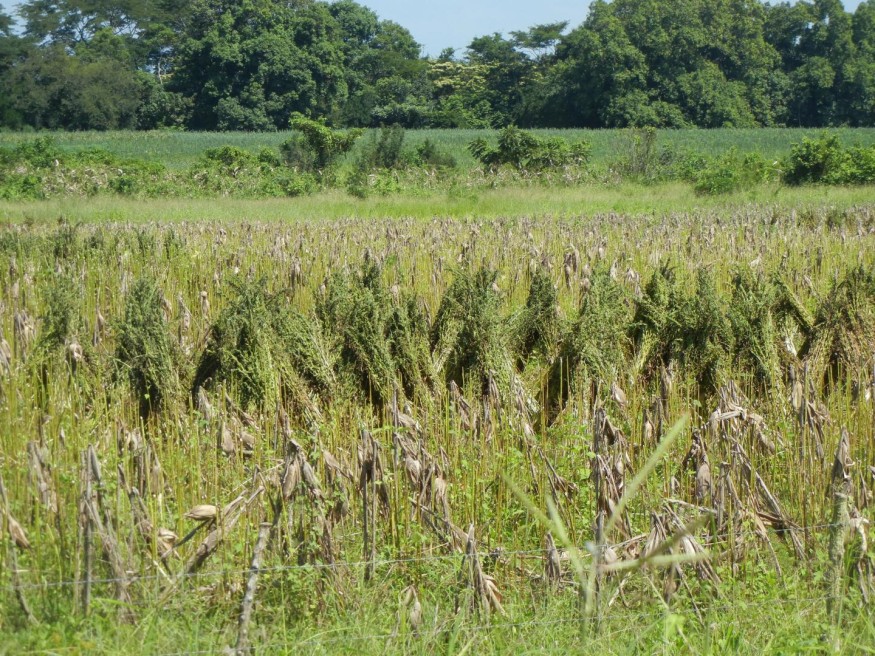Darwin Mendez has attempted and failed three times to enter the United States. He is 23 years old and has a $30,000 debt, and he claims that leaving Guatemala is his only option.
Years of savage drought burned the cornfield he farms with his father, mother, uncle, and siblings, reducing the crop and drying off the few kernels that remained on the small cobs.
Climate Change in Guatemala

Last year, unpredictably rainy weather and back-to-back hurricanes wreaked havoc on the highlands of western Guatemala, causing mudslides that buried Mendez's crops and spread pests and disease. Then, when the ground dried out, it stayed dry, and the region is now experiencing extended heat waves and severe drought once more.
"We don't have much land - no one around here does," he explained, "so when we lose crops, we lose everything."
As Guatemala teeters between severe droughts and deadly floods - two extremes exacerbated by climate change - some farmers, like Mendez, are compelled to take dramatic measures, either selling all they own or borrowing large sums of money and fleeing the country.
Most will relocate inside Guatemala to cities searching for a job, but some will join the tens of thousands of Guatemalans who undertake the far more perilous trek north each year.
Related Article : Can Climate Change Drive Humanity to Extinction?
Food Insecurity

According to one UN organization, more than one-fifth of Guatemala's population suffers from dangerously high levels of food insecurity.
In addition, according to the United Nations World Food Programme, over half of all children under the age of five suffer from chronic malnutrition, and the percentage is substantially higher in some of the country's most vulnerable rural areas.
Mendez stated, "Whatever we harvest on the field is not enough to feed ourselves." "I want to move to the United States to feed my family."
Experts have predicted that rising sea levels, higher temperatures, and more frequent extreme weather events will cause hundreds of millions of people to be displaced throughout the world due to climate change.
The impacts of global warming may approach a delicate tipping point for some of the world's most vulnerable people in regions already dealing with high levels of poverty, corruption, and violence.
It's a scenario that's already unfolding in Guatemala. Without significant reductions in global emissions, global warming is projected to result in climate migrants on nearly every continent. The ramifications will be enormous.
Migration as a "Solution"
Nicholas Depsky, a doctoral student at the University of California, Berkeley, and a researcher at the Climate Impact Lab, said, "It's hard to point to a region of the world that will not be heavily impacted by climate change and migration. It's difficult to believe there's any way to exaggerate the seriousness of the situation when you see the writing on the wall."
The flow of individuals displaced by climate change from Southeast Asia to Central America might fuel political confrontations or exacerbate existing tensions, according to Depsky.
"Migration is already such a flashpoint from a US perspective," he added. "It's such a contentious political topic, and Central America is already a major emphasis due to how much it influences our political conversation here."
The Climate Impact Lab has focused on migration, with Depsky's research focusing on droughts in Central America in particular. Guatemala is located along the so-called Dry Corridor, a length of Central America extending from southern Mexico to Panama. People are particularly vulnerable to climate change due to high poverty levels and a reliance on grain crops in rural areas.
Climate Models
Depsky was a co-author of research that predicted future drought projections in Central America and was published in the journal Environmental Research Letters in December. According to the study, drought intensity, frequency, and duration are expected to deteriorate along the Dry Corridor by the end of the century.
While the models anticipated a drop in average yearly precipitation, Depsky believes that extreme weather events such as intense storms and torrential downpours will certainly rise due to climate change. Although it is unclear if global warming increases the frequency of hurricanes in general, research has indicated that rising sea surface temperatures increase the likelihood of storms becoming major hurricanes when they develop.
Suffering for Years

Part of the issue is that no clear legal or other definition of someone qualifies as a climate migrant. Climate change is seldom the primary cause of someone leaving their house, although it is virtually always contributing to many situations.
Years of severe drought interspersed with tropical storms, last year's Hurricanes Eta and Iota, and other heavy precipitation events in Guatemala have devastated crops and pummeled the soil, according to Paris Rivera, a climatologist at Guatemala's Mariano Gálvez University.
While climate change will almost certainly lead to waves of migration in Guatemala and elsewhere, not everyone will have the means or capacity to traverse borders.
As a result, most climate migrants will most certainly be those who have been uprooted and compelled to relocate inside their nation. According to a World Bank research issued earlier this month, 216 million people might relocate inside their countries by 2050 across Sub-Saharan Africa, South Asia, Eastern Europe, North Africa, Central Asia, East Asia, and the Pacific.
For more environmental news, don't forget to follow Nature World News!
© 2025 NatureWorldNews.com All rights reserved. Do not reproduce without permission.





